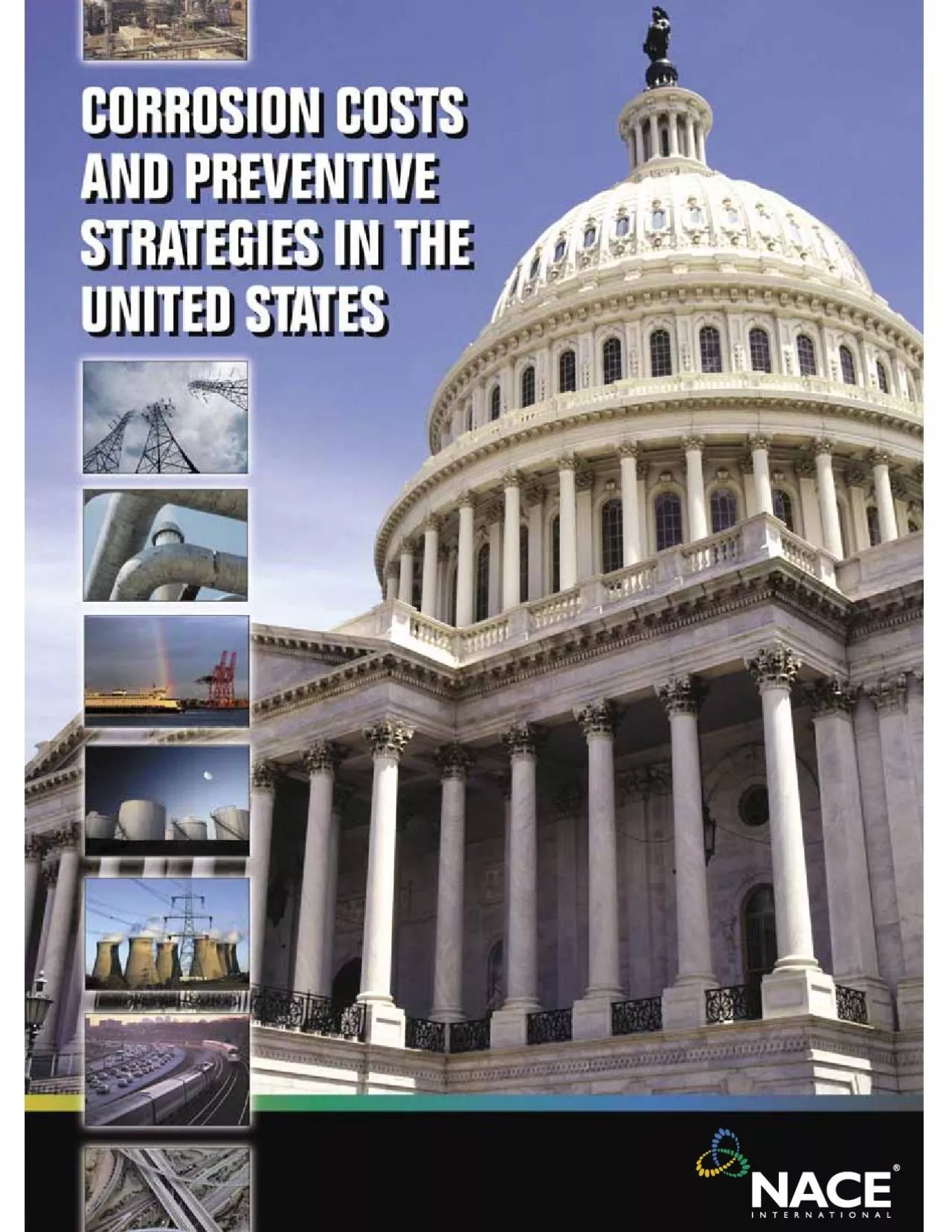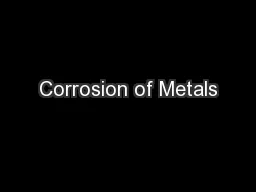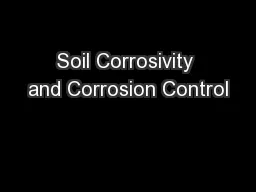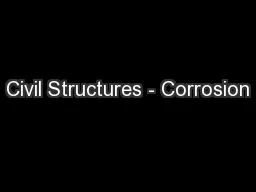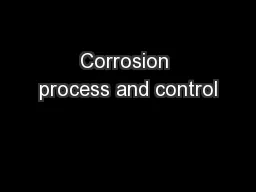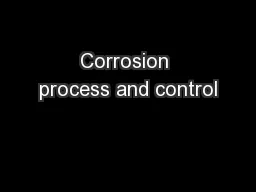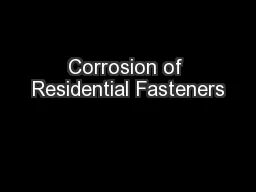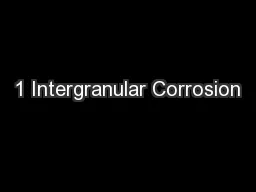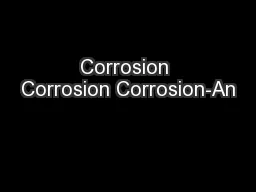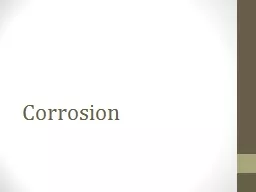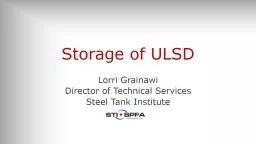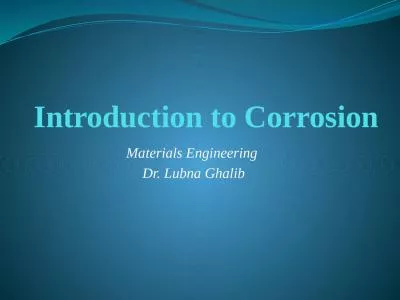PDF-Cost of Corrosion Study Unveiled
Author : jalin | Published Date : 2020-11-25
T the US Congress in 1999 as part of the Transportation Equity Act for the 21st es was conducted from 1999 to 2001 by CC Technologies Laboratories Inc with support
Presentation Embed Code
Download Presentation
Download Presentation The PPT/PDF document "Cost of Corrosion Study Unveiled" is the property of its rightful owner. Permission is granted to download and print the materials on this website for personal, non-commercial use only, and to display it on your personal computer provided you do not modify the materials and that you retain all copyright notices contained in the materials. By downloading content from our website, you accept the terms of this agreement.
Cost of Corrosion Study Unveiled: Transcript
Download Rules Of Document
"Cost of Corrosion Study Unveiled"The content belongs to its owner. You may download and print it for personal use, without modification, and keep all copyright notices. By downloading, you agree to these terms.
Related Documents

